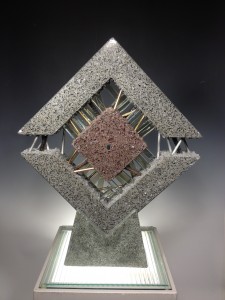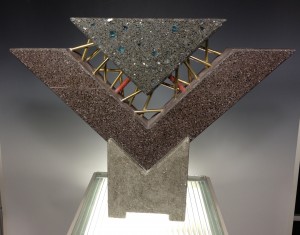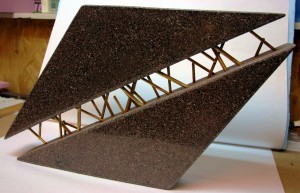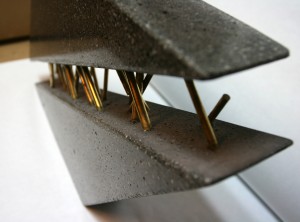Custom Kitchen Concrete Countertop
After creating my outside countertop, I couldn’t resist tackling another project. I always wanted to make my own custom concrete countertop for my kitchen. My wife and I have been renovating our home for the last 6 months and when it came to the kitchen area, I felt like I had a blank canvas. The greatest advantage to creating a concrete countertop is the unlimited possibilities for shape, surface, aggregates, and personalization. 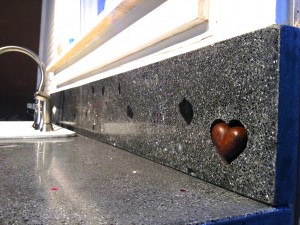
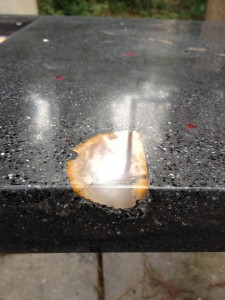
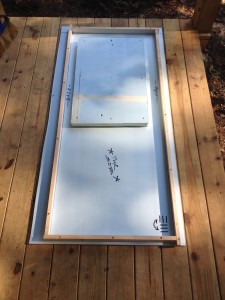
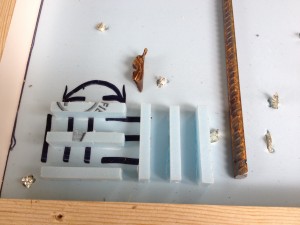
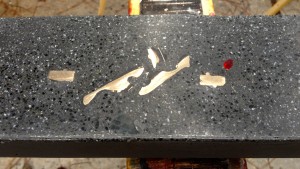
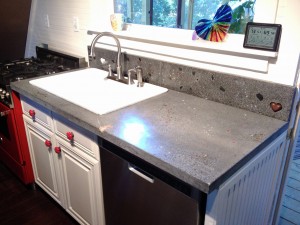
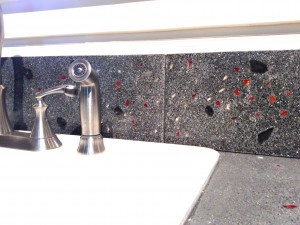
Concrete Countertop Project
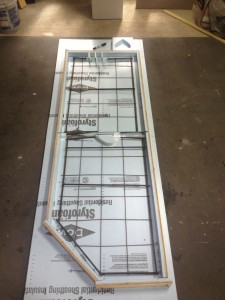
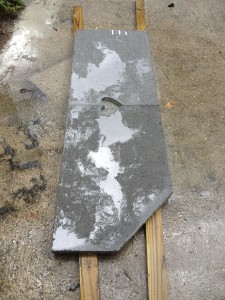
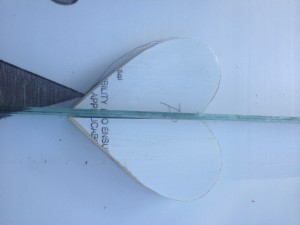
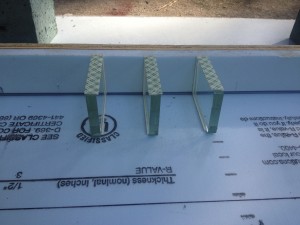
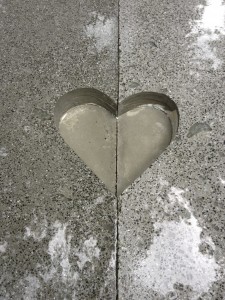
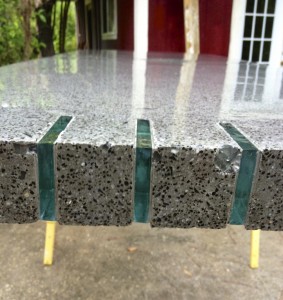

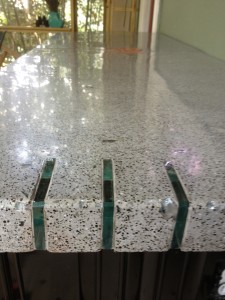 Finally did a concrete countertop for myself. This project was a great learning experience. My two objectives were to incorporate a heart inlay design and glass inlays. I found that the mold making process was the most challenging and time consuming. There were many lessons learned while making this countertop. I realized that when pouring a concrete countertop……always mix and pour during the AM hours of the day and have plenty of patience when doing final troweling. The heart inlay piece was a separate challenge….paying close attention to the debt of the void and the thickness of the heart. I wanted to make sure that the heart and countertop were polished flush with each other, making a nice smooth uninterupted surface. Also the seam dividing the two slabs had to be completely flush with no balance issues. The glass inlays came out very nice. I included these inlays at the end of the 6 inch cantilever. I used double stick tape to keep the glass pieces snug in the mold. ……All in all……this project was a success. I look forward to doing more concrete countertops in the future. My next counter will most definitely have more inlays such as glass, decorative aggregates, metal inlays, texturing, and ….unlimited creative energy.
Finally did a concrete countertop for myself. This project was a great learning experience. My two objectives were to incorporate a heart inlay design and glass inlays. I found that the mold making process was the most challenging and time consuming. There were many lessons learned while making this countertop. I realized that when pouring a concrete countertop……always mix and pour during the AM hours of the day and have plenty of patience when doing final troweling. The heart inlay piece was a separate challenge….paying close attention to the debt of the void and the thickness of the heart. I wanted to make sure that the heart and countertop were polished flush with each other, making a nice smooth uninterupted surface. Also the seam dividing the two slabs had to be completely flush with no balance issues. The glass inlays came out very nice. I included these inlays at the end of the 6 inch cantilever. I used double stick tape to keep the glass pieces snug in the mold. ……All in all……this project was a success. I look forward to doing more concrete countertops in the future. My next counter will most definitely have more inlays such as glass, decorative aggregates, metal inlays, texturing, and ….unlimited creative energy.
Concrete Jewelry…………
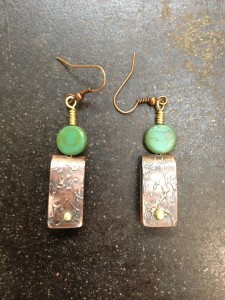 During my stay at the John C. Campbell Folk School assisting Enamelist artist Dennis Hinds, I experimented with different metal smithing projects including jewelry. I’m so excited to get into jewelry making, BUT……I want to incorporate concrete. HOW???? Lots of Google searches, studio prototypes, and patience.
During my stay at the John C. Campbell Folk School assisting Enamelist artist Dennis Hinds, I experimented with different metal smithing projects including jewelry. I’m so excited to get into jewelry making, BUT……I want to incorporate concrete. HOW???? Lots of Google searches, studio prototypes, and patience. 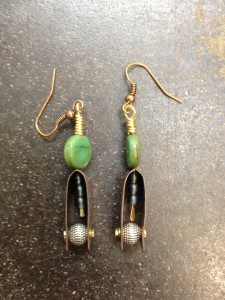
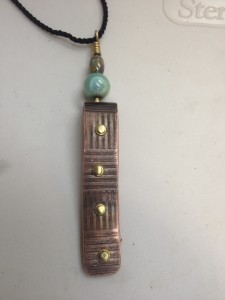
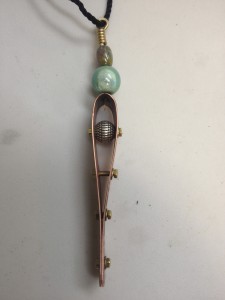
John C. Campbell Folk School
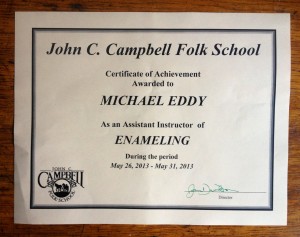 I had the pleasure of assisting Enamelist artist Dennis Hinds at the John C. Campbell Folk School for his Enameling workshop. Before Dennis asked me to be his assistant, I had never experimented with enameling…WOW!!!! What a great medium!!! In a nut shell, enameling is a material made by fusing powdered glass to a substrate by firing, usually between 750 and 850 °C (1,382 and 1,562 °F). The powder melts, flows, and then hardens to a smooth, durable vitreous coating on metal, or on glass or ceramics. I absolutely fell in love with this medium, because of the instant gratification I recieved once experimenting with different effects. I’m so glad I had the opportunity to assist Dennis and I thank him very much. It gave me the chance to introduce my line of work with concrete art and I’m strongly considering teaching a class that includes different aspects of 3-d sculpture, stamp making, and Lino. print making.
I had the pleasure of assisting Enamelist artist Dennis Hinds at the John C. Campbell Folk School for his Enameling workshop. Before Dennis asked me to be his assistant, I had never experimented with enameling…WOW!!!! What a great medium!!! In a nut shell, enameling is a material made by fusing powdered glass to a substrate by firing, usually between 750 and 850 °C (1,382 and 1,562 °F). The powder melts, flows, and then hardens to a smooth, durable vitreous coating on metal, or on glass or ceramics. I absolutely fell in love with this medium, because of the instant gratification I recieved once experimenting with different effects. I’m so glad I had the opportunity to assist Dennis and I thank him very much. It gave me the chance to introduce my line of work with concrete art and I’m strongly considering teaching a class that includes different aspects of 3-d sculpture, stamp making, and Lino. print making. 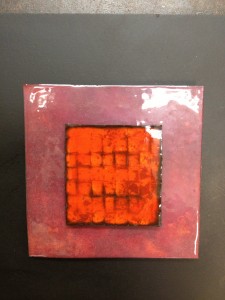
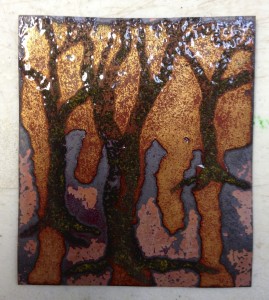
“Totemic Rip” Sculpture now in the permanent collection of Billy Gormley (Washington DC)
This sculpture called “Totemic Rip” was purchased from a gentleman out of Washington DC. He received it yesterday and immediately installed it without a hitch.
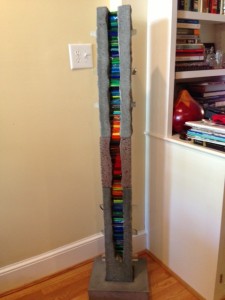
Polished Concrete, glass, and metal
Exhibiting at the 2013 New Orleans Jazz and Heritage Festival.
Concrete and metal…….a nice juxtaposition.
This is a recent sculpture that I completed a few days ago. I decided to incorporated metal such as brass as a primary support between two forms. The juxtaposition between concrete and metal is an interesting pairing. I’ve done a few sculptures with metal in the past and I want to revisit it with a series of pieces that really push the limits. I’m excited about starting this series.
Incorporating sand blasting material as an aggregate.
 Sand blasting aggregates such as “Black Beauty Coal Slag” are a great alternative to conventional aggreagates. In the past, I’ve used standard aggregates such as pea gravel and crushed wine bottle pieces. What makes me so attracted to coal slag is its emerald green glass quality. When integrated into my mix and then cured, the final polishing stage reveals its true beauty as light reflects off each individual piece. I used other aggregates with coal slag such as course river sand, marble dust, and tempered glass. When using all of these aggregates together, the polished concrete surface looks nothing like concrete. It almost has a granite stone quality. That is why I love working with this medium…….concrete gives the artisan the creative freedom to replicate any stone surface.
Sand blasting aggregates such as “Black Beauty Coal Slag” are a great alternative to conventional aggreagates. In the past, I’ve used standard aggregates such as pea gravel and crushed wine bottle pieces. What makes me so attracted to coal slag is its emerald green glass quality. When integrated into my mix and then cured, the final polishing stage reveals its true beauty as light reflects off each individual piece. I used other aggregates with coal slag such as course river sand, marble dust, and tempered glass. When using all of these aggregates together, the polished concrete surface looks nothing like concrete. It almost has a granite stone quality. That is why I love working with this medium…….concrete gives the artisan the creative freedom to replicate any stone surface.
When purchasing small quantities of Black Beauty Coal Slag, you can look for independent retailers in your area that will sell it by the 90 pound bag. Usually it’s only sold by the pallet, but if you explain to them that you’re an artist and that this material is going to be 100% recycled, they’ll probably help you out by giving you a couple of bags that have been broken.
Incorporating block printing into concrete.
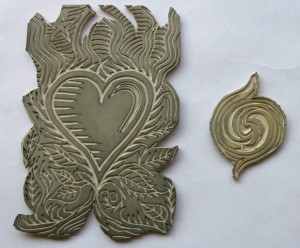
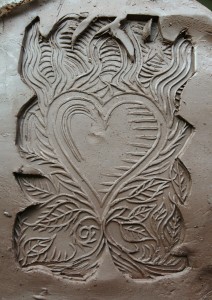
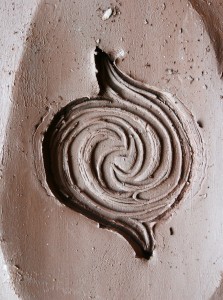
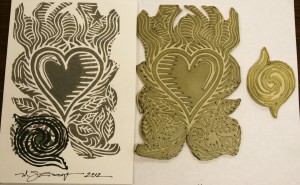 Block printing is an amazing medium to work with. In my Talented Art classes at Monteleone Jr, my 7th and 8th students are learning how to create block prints. They are also learning how to use their blocks as a tool …….. they are taking their blocks and using them as stamps into clay. By using WD-40 on the block, the clay will not stick in the individual detailed cuts. After pressing the block into the clay, the intricate detail is left behind. This eventually leaves a nice fountation for pouring a thin slurry of concrete to capture the original detail. This technique gives way to a lot of versatility between block printing and stamping.
Block printing is an amazing medium to work with. In my Talented Art classes at Monteleone Jr, my 7th and 8th students are learning how to create block prints. They are also learning how to use their blocks as a tool …….. they are taking their blocks and using them as stamps into clay. By using WD-40 on the block, the clay will not stick in the individual detailed cuts. After pressing the block into the clay, the intricate detail is left behind. This eventually leaves a nice fountation for pouring a thin slurry of concrete to capture the original detail. This technique gives way to a lot of versatility between block printing and stamping.


